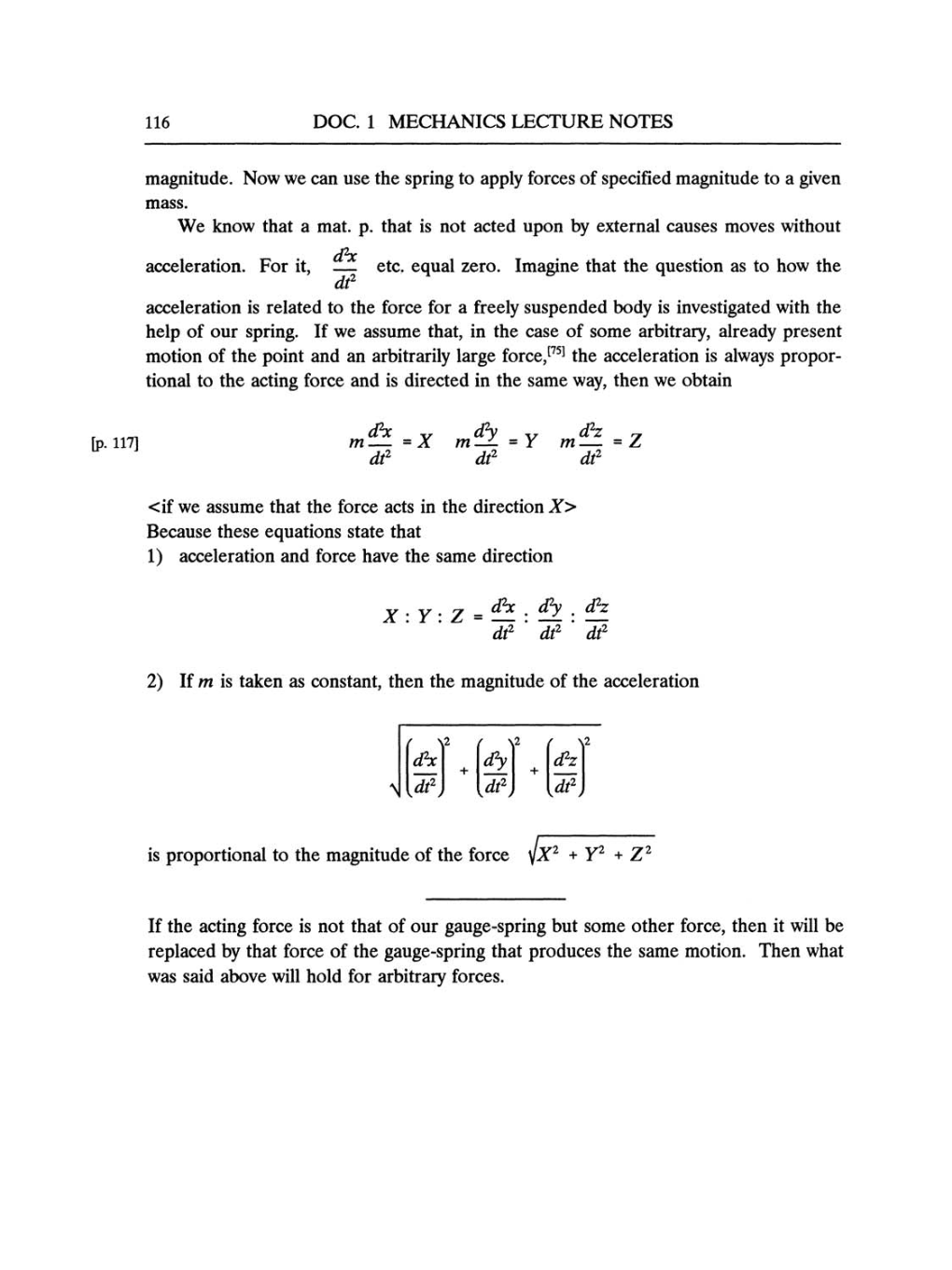116
DOC.
1
MECHANICS LECTURE NOTES
magnitude.
Now
we can use
the
spring
to
apply
forces
of
specified
magnitude
to
a
given
mass.
We
know
that
a
mat.
p.
that
is
not
acted
upon
by
external
causes moves
without
d2x
acceleration. For
it,
-
etc.
equal
zero.
Imagine
that the
question
as
to how
the
dt2
acceleration
is
related
to
the
force
for
a
freely suspended
body
is
investigated
with
the
help
of
our
spring.
If
we
assume
that,
in
the
case
of
some arbitrary,
already present
motion of the
point
and
an arbitrarily
large
force,
[75]
the acceleration
is
always
propor-
tional
to
the
acting
force and
is
directed
in
the
same
way,
then
we
obtain
[p. 117]
m-
=
X
=
Y
m-
=
Z
dt2 dt2 dt2
if
we assume
that the
force acts in
the direction
X
Because
these
equations
state
that
1)
acceleration and
force
have
the
same
direction
X :
Y:
Z
=
-
:
-
dt2 dt2 dt2
2)
If
m
is
taken
as
constant,
then the
magnitude
of the
acceleration
N
/
(fx
dt2.
V
/
\2 \2
\dt2,
(fz
dt2
is proportional
to
the
magnitude
of the force
\lx2
+
Y2
+
Z2
If the
acting
force
is
not
that of
our
gauge-spring
but
some
other
force,
then
it will
be
replaced
by
that
force
of the
gauge-spring
that
produces
the
same
motion. Then
what
was
said above will
hold for
arbitrary
forces.
